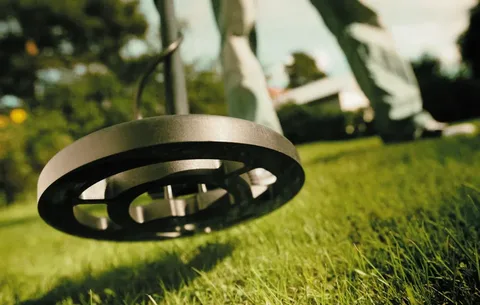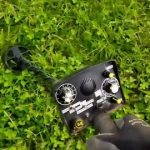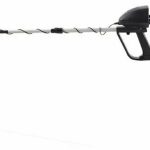Gold and Metal Detector: Uncover Hidden Treasures
Have you ever dreamt of uncovering buried treasure or stumbling upon a long-lost artifact? With a gold and metal detector, you can turn that dream into a reality. These innovative devices are designed to detect precious metals and other valuable objects hidden beneath the earth’s surface. Whether you are an avid treasure hunter or simply intrigued by the possibility of finding hidden riches, a gold and metal detector can provide endless excitement and adventure. In this guide, we will explore the world of metal detecting and how you can use this technology to uncover hidden treasures.
Uncover Hidden Treasures with a Gold and Metal Detector by learning how to properly operate the device and understand the signals it gives off. This can involve researching different types of metal detectors and understanding the specific settings for gold detection. Additionally, it’s important to explore areas with a history of gold mining or where other valuable items may have been lost or buried. Proper technique and persistence are key to successfully uncovering hidden treasures with a gold and metal detector.
The Best Gold and Metal Detectors of 2021

The best gold and metal detectors of 2021 are known for their advanced features, precision, and ability to detect metals and gold in various terrains. They are equipped with high-quality coils, advanced discrimination settings, and adjustable sensitivity levels to allow for accurate detection. Many of these detectors also come with additional features such as waterproofing, ground balancing, and multiple search modes to cater to different user needs. Some popular models include the Minelab Equinox 800, Garrett AT Pro, and Fisher Gold Bug, which have received high praise for their performance and reliability. These detectors are ideal for treasure hunters, gold prospectors, and hobbyists looking to explore the great outdoors.
Uncovering Hidden Treasures: Gold and Metal Detectors Explained

Uncovering Hidden Treasures: Gold and Metal Detectors Explained is a comprehensive guide that delves into the world of metal detecting and provides valuable information on the different types of detectors available, how they work, and tips for using them effectively. The book covers various topics such as the science behind metal detection, the different types of metals that can be detected, and the best practices for maximizing your chances of uncovering hidden treasures. Whether you’re a beginner or an experienced metal detectorist, this book is a valuable resource for enhancing your metal detecting skills and knowledge.
Pros and Cons of Using Gold and Metal Detectors

Pros of using gold and metal detectors:
1. They can help you find valuable treasures such as gold, silver, and other precious metals.
2. They are useful for locating lost items such as jewelry, coins, and other metallic objects.
3. They can be a fun and exciting hobby for treasure hunters and metal detecting enthusiasts.
4. Some advanced models are designed to be waterproof, making them suitable for use in various environments, including beaches and rivers.
Cons of using gold and metal detectors:
1. They can be expensive, especially for high-quality, advanced models.
2. Using metal detectors in public places may raise privacy and ethical concerns, especially if it involves digging or disturbing the environment.
3. False signals and interference from other metal objects or electromagnetic fields can be a common issue, leading to frustration and wasted time.
4. Metal detecting may be prohibited in certain locations, such as private properties, archaeological sites, and national parks, leading to legal and ethical complications.
Maximizing Your Treasure Hunt: Tips for Gold and Metal Detector Users

Maximizing Your Treasure Hunt: Tips for Gold and Metal Detector Users is a comprehensive guide that offers essential advice for those using metal detectors to find gold and other treasures. The guide covers various topics such as how to properly calibrate and use metal detectors, techniques for searching and digging, and tips for identifying valuable finds. Whether you’re a beginner or an experienced detectorist, this guide is designed to help you maximize your treasure-hunting experience and increase your chances of finding valuable items.
The Science Behind How Gold and Metal Detectors Work
Gold and metal detectors work on the principle of electromagnetism. They consist of a coil that produces a magnetic field when electricity is passed through it. When the detector is moved over a metallic object, the magnetic field from the object disturbs the magnetic field produced by the coil. This disruption is detected by the detector, which then alerts the user to the presence of metal.
Gold detectors are particularly sensitive to small traces of gold due to the unique conductivity and magnetic properties of the metal. This sensitivity allows them to differentiate between gold and other metals, making them valuable tools for prospectors and treasure hunters.
In addition to electromagnetic principles, modern metal detectors also utilize advanced signal processing techniques and materials technology to improve their accuracy and sensitivity. These advancements have made them indispensable tools for a wide range of applications, from security screening to archaeological exploration.
Finding Gold: The Top Locations for Metal Detector Enthusiasts
Finding Gold: The Top Locations for Metal Detector Enthusiasts is a guidebook that provides detailed information on the best locations around the world for using metal detectors to find gold. The book includes tips and techniques for successful gold prospecting, as well as information on the geology and history of each location. It is a valuable resource for both beginner and experienced metal detector enthusiasts looking to find gold.
The Ultimate Guide to Choosing the Right Gold and Metal Detector
See also: buy metal detector
“The Ultimate Guide to Choosing the Right Gold and Metal Detector” is a comprehensive resource that provides information on the various features and specifications to consider when selecting a detector for gold and metal detection. The guide covers factors such as frequency, sensitivity, discrimination, ground balance, and various other advanced features to help you make an informed decision. Whether you are a beginner or an experienced detectorist, this guide is designed to assist you in finding the best detector for your specific needs.
Exploring the World of Gold and Metal Detecting: A Beginner’s Guide
Exploring the World of Gold and Metal Detecting: A Beginner’s Guide is a comprehensive resource for novices interested in this hobby. The book covers everything from choosing the right metal detector to understanding the different types of metal detecting, techniques for finding gold and other valuable metals, and tips for researching and scoping out potential hunting grounds. It also includes information on necessary equipment, safety measures, and regulations to help beginners get started on the right foot. Whether you’re interested in hobbyist metal detecting or trying to strike it rich, this guide provides valuable insights and practical advice for beginners.
Top 10 Accessories Every Gold and Metal Detectorist Needs
1. Pinpointer – A pinpointer is an essential accessory for detecting small targets in the ground without the need to dig up large areas.
2. Headphones – Good quality headphones are necessary for clearly hearing the signals from the metal detector in noisy or windy conditions.
3. Digging Tool – A strong and durable digging tool is essential for extracting targets from the ground without causing damage.
4. Pouch or Bag – A sturdy pouch or bag is necessary for carrying accessories, finds, and other essential items while out detecting.
5. Finds Box or Container – A secure container for storing valuable finds and keeping them safe during long detecting sessions.
6. Coil Cover – A coil cover helps protect the search coil from scratches, chips, and other damage during use.
7. Gloves – A good pair of gloves provides protection for the hands while digging and handling rough or sharp objects.
8. Knee Pads – Knee pads are useful for protecting the knees while digging, kneeling, or inspecting targets on rough terrain.
9. Tool Belt or Harness – A tool belt or harness is helpful for comfortably carrying and accessing detecting tools and accessories.
10. Cleaning Tools – Brushes, scrapers, and other cleaning tools are essential for carefully removing dirt and debris from finds without causing damage.
Metal Detecting Etiquette: The Do’s and Don’ts for Treasure Hunters
Metal detecting etiquette is important to keep in mind when treasure hunting to ensure that both the environment and other people are respected. Here are some do’s and don’ts for treasure hunters:
Do’s:
– Always obtain permission to metal detect on private property.
– Fill in any holes you dig while searching for treasures.
– Respect any signs or regulations in public parks or natural areas regarding metal detecting.
– Dispose of any trash or debris you may encounter during your search.
– Report any significant finds or historic artifacts to local authorities or historical societies.
Don’ts:
– Never metal detect on protected or environmentally sensitive areas.
– Do not trespass on private property without permission.
– Do not leave any holes open, as this can be hazardous to others.
– Avoid disrupting nature or damaging any plants or wildlife during your search.
– Do not keep any significant historical or cultural artifacts without proper authorization.
Following these guidelines will ensure that you are a responsible and considerate metal detectorist and will help to preserve the hobby for future generations.












